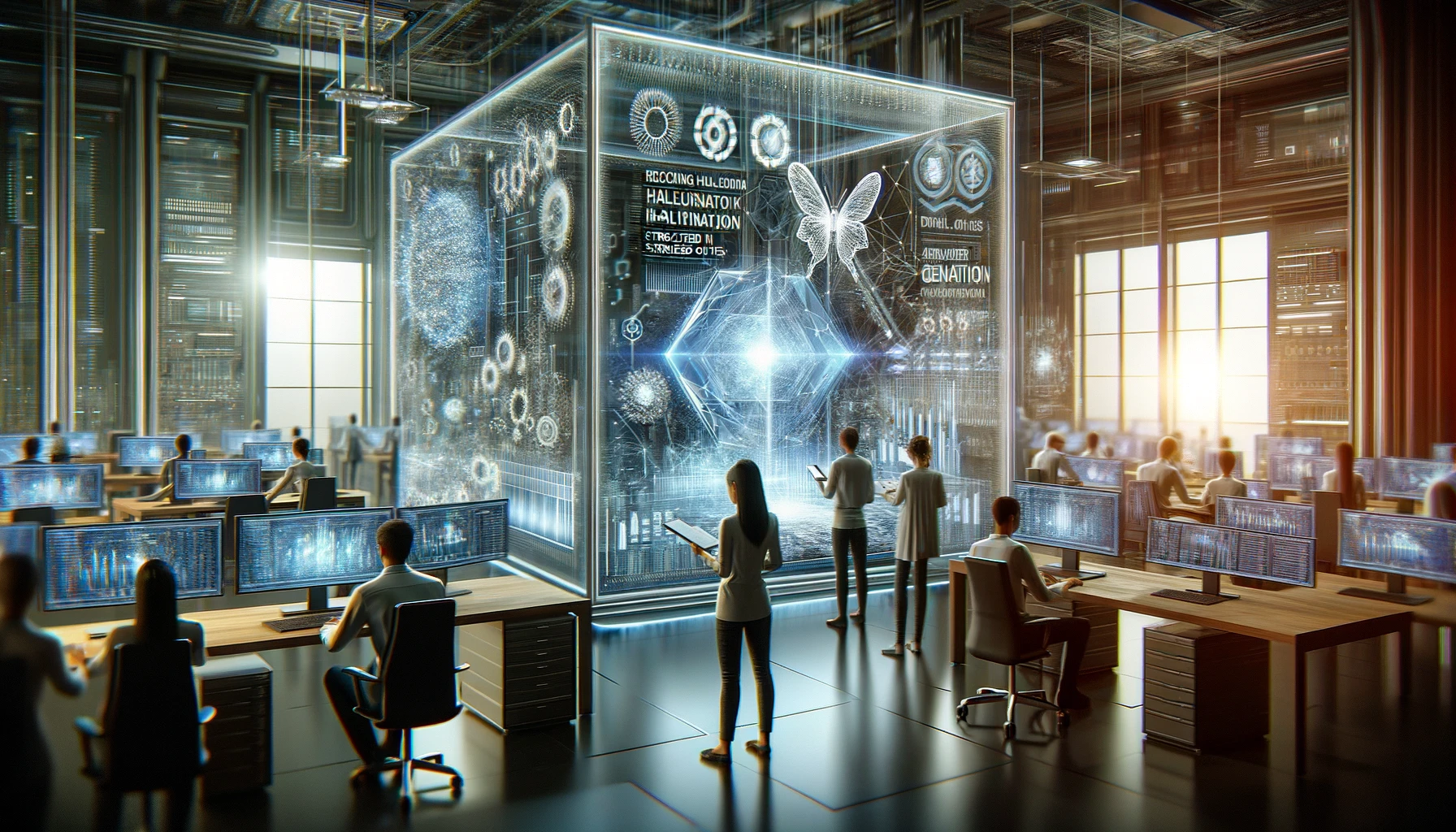Key Points
1. The paper addresses the issue of hallucination in Generative AI (GenAI) by proposing a system leveraging Retrieval-Augmented Generation (RAG) to improve the quality of structured output for enterprise applications that produce workflows from natural language requirements.
2. The research aims to reduce the propensity of Generative AI to hallucinate, particularly when generating workflows from natural language requirements, and to allow the generalization of Large Language Models (LLMs) in out-of-domain settings.
3. Retrieval-Augmented Generation (RAG) is utilized to reduce hallucination and improve the trustworthiness of the output by retrieving relevant JSON objects to be used as input for the Large Language Model.
4. The research focuses on the generation of structured data, specifically workflows represented as JSON documents, and explores the challenges of generating valid structured output from natural language requirements while minimizing hallucination.
5. The paper discusses the training of both the retriever and the LLM separately in a Retrieval-Augmented Generation setting to reduce hallucination while maintaining performance, and provides detailed evaluation metrics related to the retrieval of steps and tables, as well as the performance of the deployed RAG system in both in-domain and out-of-domain scenarios.
6. Different model sizes and types, including LLMs and retriever encoders, are evaluated to measure the impact on performance and hallucination in the structured output task, with a focus on finding the optimal trade-off between model size and performance.
7. The research highlights the importance of including a retrieval system in reducing hallucination and improving the generation of structured data, showcasing differential performance based on the inclusion of the retriever's suggestions in the RAG fine-tuning process for the LLM.
8. The paper discusses specific challenges and potential improvements, such as reducing system response time, improving the retriever's recall, and addressing issues related to logical workflow generation by the LLM, based on observed error patterns in the generated workflows.
9. The paper concludes by discussing the implications of the obtained results on the scalability and modularity of the proposed system and proposes future work, including improving the synergy between the retriever and the LLM and potential joint training approaches. Additionally, the paper acknowledges the contributions of the researchers and provides a comprehensive set of references for further exploration.
Summary
The paper discusses the limitations of Generative AI (GenAI), particularly the issue of hallucination, and proposes a system using Retrieval-Augmented Generation (RAG) to improve the quality of structured outputs. The researchers implemented RAG in an enterprise application to reduce hallucination and improve the trustworthiness of workflow outputs represented as JSON documents. They found that RAG significantly reduces hallucination and allows the generalization of Large Language Models (LLM) to out-of-domain settings. Additionally, it was observed that using a small, well-trained retriever can reduce the size of the accompanying LLM at no loss in performance, making LLM-based systems less resource-intensive.
Application of RAG in Workflow Generation
The paper extensively discusses the application of RAG in workflow generation, a structured output task, improving the trustworthiness of the output by reducing hallucination. The researchers noted the importance of using RAG in a commercial application to minimize the out-of-distribution mismatch and reduce infrastructure costs. They also experimented with different negative sampling strategies for training the retriever and evaluated the performance of various model types and sizes on in-domain and out-of-domain splits.
Performance Evaluation of the RAG System
The study focused on evaluating the performance of the RAG system using various metrics, including Trigger Exact Match, Bag of Steps, Hallucinated Tables, and Hallucinated Steps. The results indicated that the RAG system, particularly when fine-tuned with a retriever, consistently reduced hallucination and improved overall performance. Additionally, the paper accentuated the importance of response time and scalability, the impact of model size on performance, and the need for clear separation of concerns and independent optimization in the system's development.
Overall, the paper demonstrated the efficacy of Retrieval-Augmented Generation in reducing hallucination and improving the quality of structured outputs, offering valuable insights into the implementation and optimization of RAG systems for real-world GenAI applications.
Reference: https://arxiv.org/abs/2404.081...
